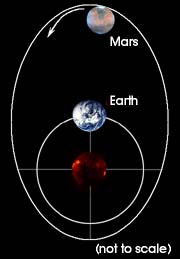This drawing illustrates "eccentricity".
Click on image for full size
Martian Orbit affects Climate
This drawing illustrates the large excursions in standard distance from the sun possible over the course of a Martian year. (The drawing slightly exaggerates the size scales).
If conditions are just right, there are times when Mars can experience a great deal more warming than normal.
Earth does not have the same potential for the climate extremes possible for Mars.
You might also be interested in:
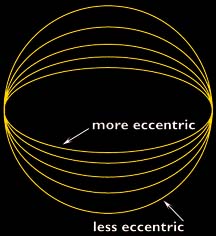
The Martian climate is more influenced by the shape of the Martian orbit than the climate of the Earth is influenced by the shape of the Earth's orbit. The orbit of Mars is more elliptical than that of
...more
On August 27, 2003, Earth and Mars will be closer together than they have been in thousands of years. The centers of the two planets will be 55,758,006 kilometers (34,646,418 miles) apart at 9:51 Universal
...more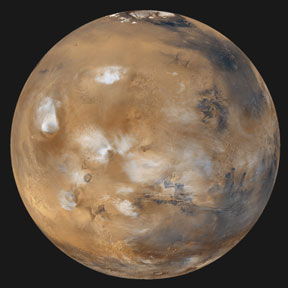
The planet Mars will be much closer to Earth than it normally is at 0319 Universal Time on October 30, 2005. Earth and Mars will pass within 69 million km (43 million miles) of each other, and Mars will
...more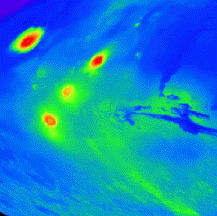
On this map of Mars, the lightly cratered Tharsis Ridge is shown, as well as the heavily cratered Martian highlands (near the bottom of the picture), and Valles Marineris to the right. The volcanoes are
...more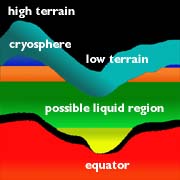
The unusual global geography of Mars helps to explain the fact that water has been drawn from the southern hemisphere to the northern hemisphere of the planet through all of Martian history (that is, from
...more
The Martian geography is one of high altitudes at high southern latitudes and low altitudes at low latitudes. The ground is less frozen at low latitudes because it is warmer and water can evaporate. Thus,
...more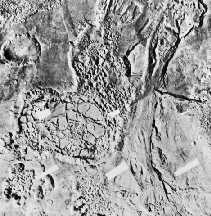
Separate from the Martian outflow channels, or the river valley networks, are large Martian lakes (600 km, or ~1000 miles across) which exhibit evidence of a periodic and catastrophic release of water
...more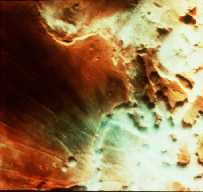
This is an image of fog in a Martian canyon. The presence of fog provides evidence of water, and a water cycle on Mars. More fog has been seen in images returned by Mars Global Surveyor of the south polar
...more


